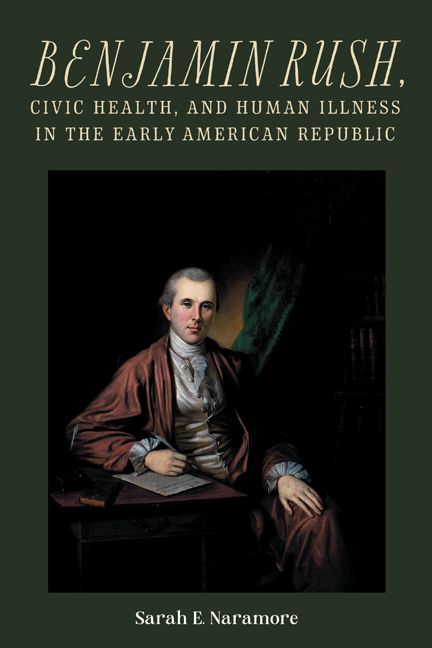3 - Making and Sharing Medical Knowledge
Published online by Cambridge University Press: 10 January 2024
Summary
Reflecting on his life in the early nineteenth century, middle-aged Benjamin Rush sat down to sketch out his autobiography. He intended for the text to be read by his children although it is likely he expected others to read it eventually. The book addressed Rush's childhood, education, and political opinions. In it, he also presumed that readers would question the amount of work he completed in his lifetime. Rush assumed that his children would be impressed by his productivity and want to know how he managed to publish so many texts on a variety of subjects. Like his some-time neighbor and political rival Alexander Hamilton, one could argue that Rush wrote like he was “running out of time.” The amount of writing he managed to do in his lifetime is simply staggering as was the scope of his projects. Rush wrote frequently for both medical and popular audiences and constantly made connections between different parts of his lived experience. This was aided by his substantial correspondence network that covered the early United States and maintained contacts in the Caribbean, Britain, France, Italy, and parts of Spanish America. Interesting conversations, notes from letters, or thoughts gleaned from reading other texts typically found their way first into his commonplace book and then into lectures, orations, and finally printed texts.
As shown in chapter 2, Rush was socialized in a late-eighteenth-century intellectual culture that valued this kind of collaboration, borrowing, and eclectic approach to knowledge. All characteristics of Scotland and subsequently America's Enlightenment were incorporated. While it doesn't fit with modern ideas about disciplinarity, Rush's writing, thinking, and corresponding created the medical knowledge used to back up his ideas. Tidbits of information about distant people or places along with personal experience and case studies mounted up in his notes and commonplace books to support ideas of regularity, the centrality of excitement, and unique variability of the United States. Networked connections with other people were the most important part of Rush's process. He found inspiration from interactions with others writing, “[i]n acquiring knowledge I did not depend exclusively upon books. I made … every person I conversed with contribute to my improvement.
- Type
- Chapter
- Information
- Publisher: Boydell & BrewerPrint publication year: 2023

